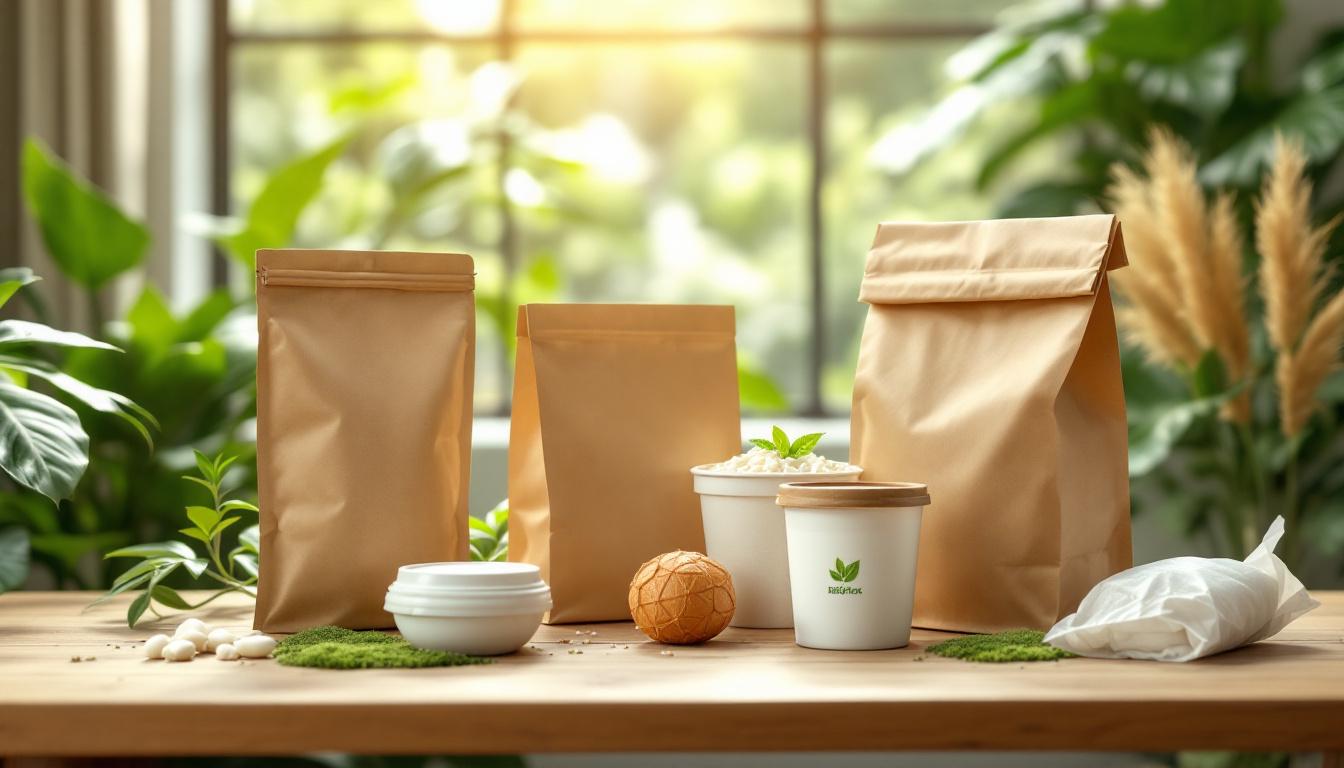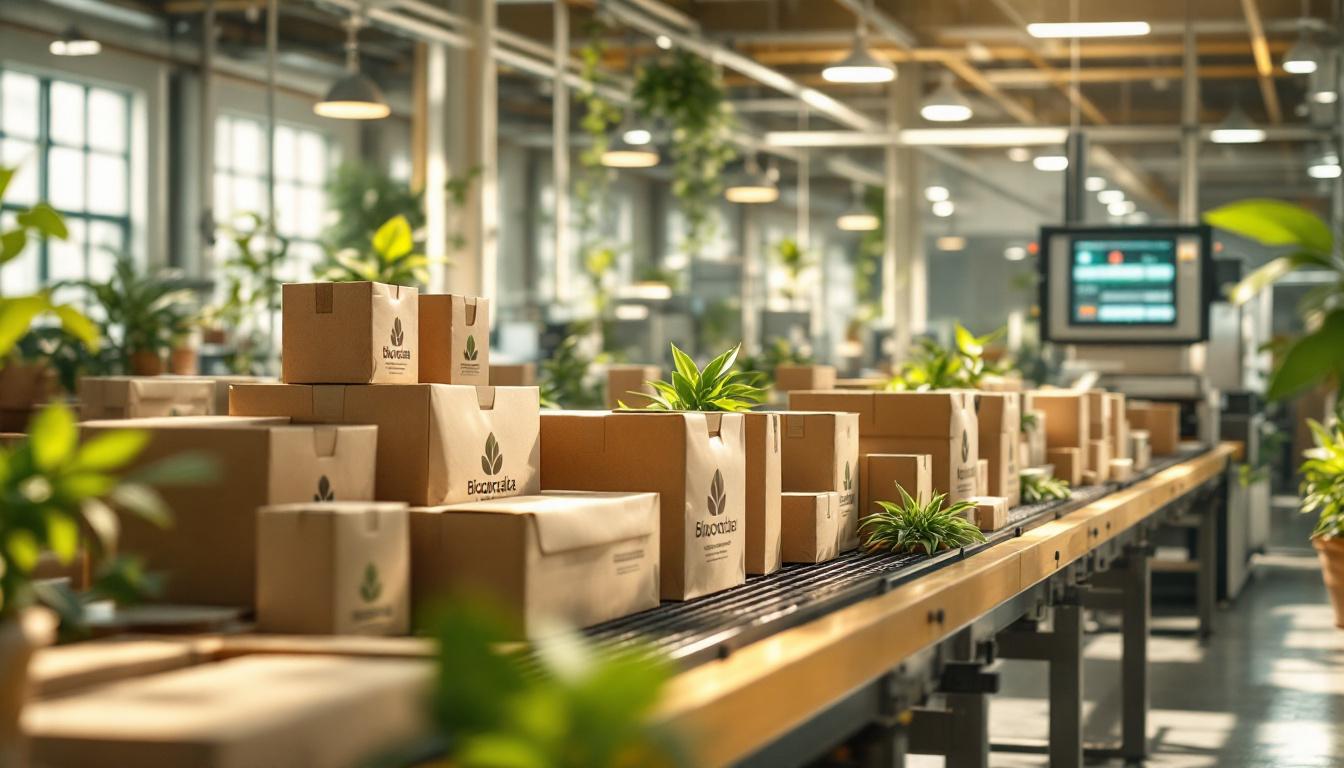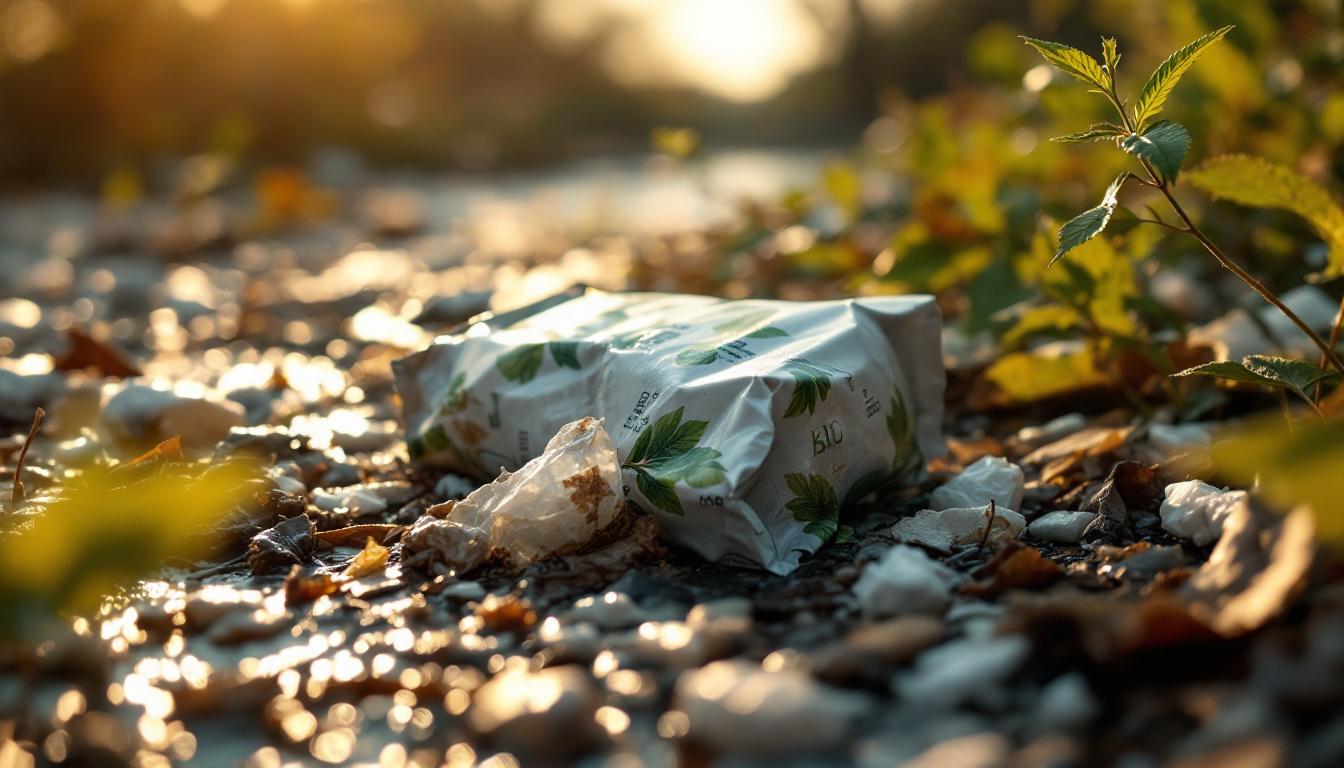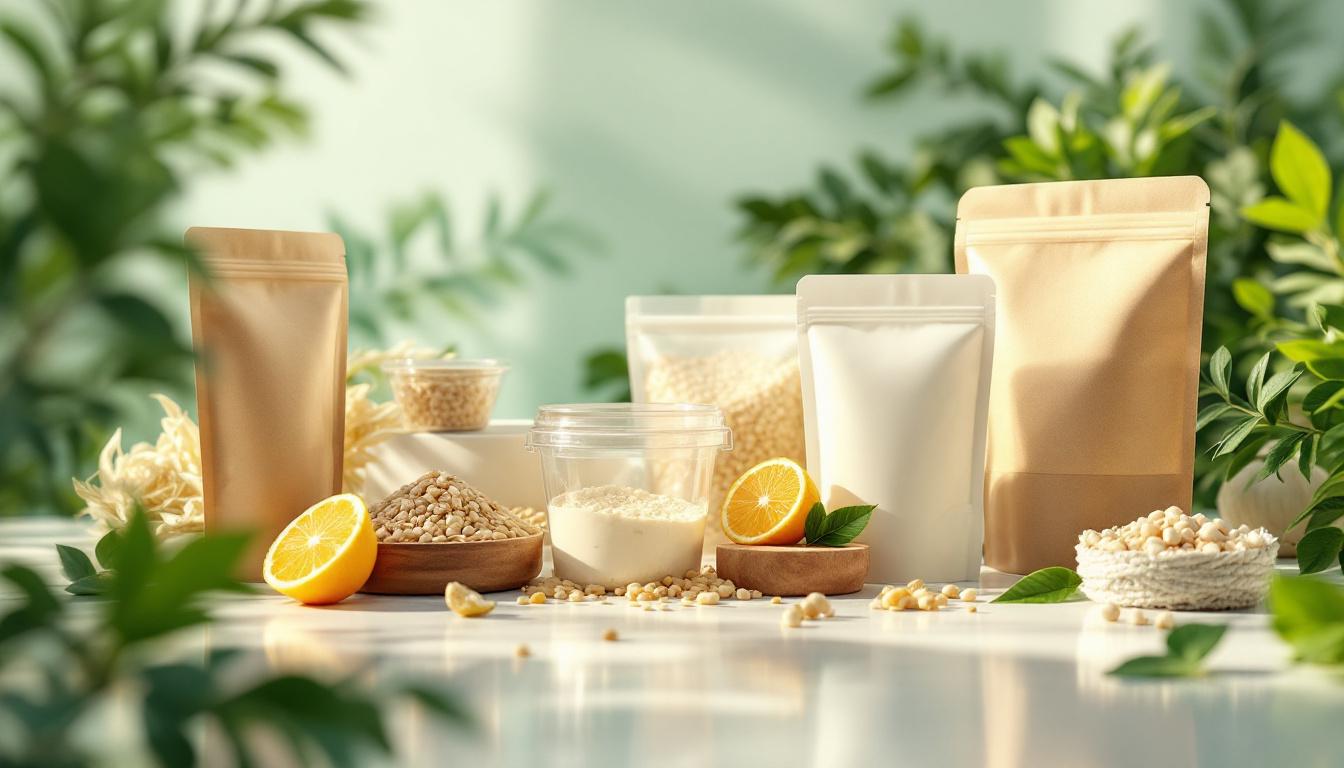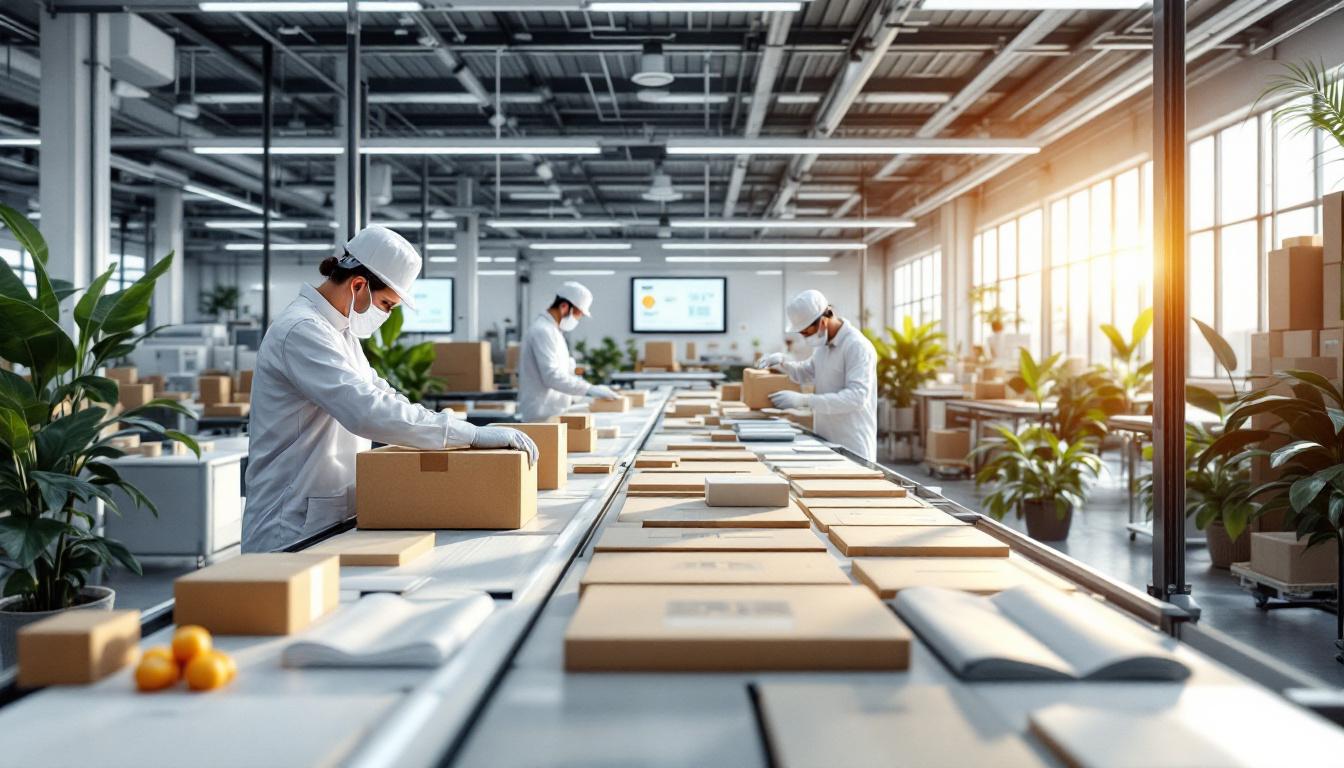![Biodegradable Packaging: Proven Benefits and Real Limitations in Contract Packaging [2025 Guide]](https://msl-indy.com/wp-content/uploads/2025/08/biodegradable-packaging-materials-contract-facility.jpg)
Biodegradable Packaging: Proven Benefits and Real Limitations in Contract Packaging [2025 Guide]
Biodegradable packaging is showing up everywhere, especially in contract packaging, as more brands aim to meet consumer demand for greener choices. It’s easy to see why—it breaks down faster than traditional plastics and often uses renewable materials. More companies in contract packaging are adopting these options to cut waste and lower their environmental footprint. Still, while it brings clear benefits, biodegradable packaging doesn’t always deliver perfect results in real-world use. In this post, you’ll get a balanced look at where biodegradable packaging shines, where it misses the mark, and why so many businesses are making the switch.
For more on packaging strategies that align with sustainability and consumer expectations, check out Sustainable packaging and environmental impact.
How Biodegradable Packaging Works
Biodegradable packaging is changing how companies think about product shipping and storage. It stands out for its ability to break down into natural elements within months or a few years, unlike conventional plastics that can last for centuries. To see why it’s gaining traction and how it actually performs, let’s look at what makes packaging “biodegradable,” the usual materials, how the breakdown process works, and the important difference between biodegradable and compostable options.
Defining Biodegradable Packaging
Biodegradable packaging includes any material that can be decomposed by living organisms, mostly microbes, into water, carbon dioxide, and biomass. The appeal is clear: less lasting waste, smaller environmental footprint, and a better brand image for companies showing they care. These packaging options are not all created equal, and understanding what qualifies as “biodegradable” often takes a closer look at the fine print.
Common materials found in biodegradable packaging include:
- Polylactic acid (PLA): Made from corn starch or sugarcane, PLA is popular for food packaging and bottles.
- Polyhydroxyalkanoates (PHAs): These are bioplastics produced by bacteria, used in bags, wraps, and food containers.
- Paper and cardboard: Naturally biodegradable, widely used, and often sourced from renewable forests.
- Cellulose: Plant fibers form films and wraps that mimic plastic but break down quickly.
Each material has unique strengths, from how sturdy it is to how quickly it decomposes. If you want a deeper dive into what sets biodegradable packaging apart, visit Biodegradable packaging, what is it?.
How the Decomposition Process Works
For something to truly be called biodegradable packaging, it needs to break down through the natural activity of microorganisms, such as bacteria and fungi. The result? The packaging doesn’t stick around in landfills or the environment. But this process counts on the right mix of heat, moisture, oxygen, and microbes.
Here’s how it happens, step by step:
- Exposure: The packaging enters an environment rich in microbes—like industrial composters or, less often, home compost piles.
- Breakdown: Bacteria and fungi consume the materials, converting them into water, CO2, and small amounts of organic matter.
- Integration: The remaining matter blends into the surrounding soil, ready to support future plant growth.
Environmental conditions matter a lot. PLA, for example, only breaks down quickly at specific temperatures and humidity levels, like those in commercial composting facilities. In a landfill or natural setting, this process may slow down dramatically.
Biodegradable vs. Compostable: What’s the Difference?
Many use “biodegradable” and “compostable” interchangeably, but they are not the same. Compostable packaging is a type of biodegradable material that needs stricter conditions to fully break down, usually in an industrial composting setup. It must leave behind no toxic residue and meet certain time frames for decomposition.
Key differences in a nutshell:
| Property | Biodegradable | Compostable |
|---|---|---|
| Breakdown Time | Varies (months to years) | Must be quick (weeks to months) |
| End Products | Water, CO2, biomass | Water, CO2, biomass, no toxins |
| Decomposition Environment | Broad (landfill, compost, soil etc.) | Specific (industrial composters) |
| Standards | No strict time frame | Must pass compostability standards |
It’s important to select the right material based on its final destination and how your packaging will be treated after use. Businesses aiming for true eco-friendly shipping can refer to Sustainable packaging and environmental impact for more on the impact of material choices.
Everyday Examples of Biodegradable Packaging
To put things in perspective, here are some everyday items made from biodegradable packaging:
- Food service containers and utensils (PLA, PHA)
- Shopping bags (corn starch blends)
- Beverage cups and lids (bioplastics or paper with starch linings)
- Shipping inserts and void fill (molded pulp or biodegradable foam)
Just keep in mind, while these products sound “green,” their real sustainability depends on how they’re disposed of and whether they end up in the right decomposition environment.
Considerations for Contract Packaging
Choosing biodegradable options in contract packaging requires a close look at materials, supply chains, and end-of-life management. Paper and molded pulp are easy to recycle and compost in many settings, while bioplastics often demand special handling. Some materials offer strong protection for delicate items; more about this is covered in the Benefits of Protective Packaging.
In contract packaging, the right biodegradable choice has to check off several boxes:
- Will it protect your product during transit?
- Is it cost-effective for your needs?
- Can customers easily dispose of it in a sustainable way?
- Does it align with broader environmental goals?
Understanding how biodegradable packaging functions at every stage helps brands avoid greenwashing and deliver true environmental value.
Key Benefits of Biodegradable Packaging in Contract Packaging
As brands seek smarter paths to sustainability, biodegradable packaging stands out for its clear benefits in contract packaging. These advantages stretch beyond the environmental, shaping how companies approach operations, meet customer expectations, and respond to regulatory shifts. Understanding these real-world perks can help businesses make smart, responsible choices.
Environmental Impact: Waste Reduction and a Smaller Carbon Footprint
Biodegradable packaging is designed to break down naturally, which slashes the volume of waste clogging up landfills and polluting cities. When these materials reach the end of their life, microbes in soil or composting environments convert them into water, carbon dioxide, and organic matter. This cycle helps cut the burden of plastic pollution.
Key environmental upsides include:
- Less persistent waste: Unlike traditional plastics, biodegradable options vanish over time, not decades.
- Lower carbon output: Production often relies on renewable sources like corn starch or plant fibers, which means fewer fossil fuels and reduced greenhouse gas emissions.
- Cleaner disposal: These materials, when composted, avoid releasing toxic byproducts.
Switching to biodegradable packaging doesn’t solve all waste problems, but it offers a big step toward cleaner operations and a lighter carbon footprint.
Operational Gains: Streamlining Disposal and Simplifying Compliance
Biodegradable packaging makes life easier for producers, vendors, and end users. Disposal can be simpler, with less sorting and fewer worries about harming the environment or failing local waste standards. More contracts require businesses to prove their eco-friendly credentials, and packaging that biodegrades ticks that box efficiently.
Here’s how this switch helps day-to-day operations:
- Easier end-of-life handling: Customers can toss biodegradable packages into compost bins or municipal waste streams (where accepted), reducing confusion or illegal dumping.
- Smoother logistics: Some biodegradable materials are lighter than conventional plastics, trimming shipping costs and saving fuel.
- Regulatory peace of mind: Local and national governments are tightening packaging rules. Using biodegradable alternatives helps companies stay a step ahead, avoiding fines or last-minute redesigns.
Contract packagers play a powerful part in this shift. They have the tools, knowledge, and supply networks to put sustainable solutions into play quickly. To get the full picture of how outsourcing packaging tasks can help you benefit from these trends, see the Benefits of contract packing services.
Meeting Consumer and Regulatory Demands for Sustainability
Consumer values are changing fast. People want packaging that lines up with their focus on the environment, and they vote with their wallets. Biodegradable packaging makes it easy for brands to show they’re listening. Shoppers feel better about buying from companies that invest in solutions that won’t harm the planet for generations.
Trends shaping this shift:
- Rising eco-awareness: Recycling and composting are normal at home now. Customers expect products to fit these habits.
- Brand loyalty: Products with eco-friendly packaging stand out. When shoppers see biodegradable symbols, it sparks trust and repeat business.
- Staying legal: New rules about single-use plastics and landfill waste are here. Biodegradable options make compliance smoother, slashing the risk of having products pulled from shelves.
A Quick Look: Key Benefits Table
Here’s a snapshot for easy reference:
| Benefit | Short Description |
|---|---|
| Reduced Environmental Impact | Less waste, lower carbon emissions, cleaner lifecycle |
| Simpler Disposal | Easily composted or processed in existing waste streams |
| Cost Savings in Logistics | Lightweight materials cut down on shipping costs |
| Improved Brand Perception | Shows a real commitment to sustainability |
| Regulatory Readiness | Supports compliance with emerging packaging laws |
| Consumer Trust and Loyalty | Gives shoppers confidence in brand responsibility |
Biodegradable packaging checks many of the boxes modern contract packaging clients care about. Whether the priority is cutting emissions, making disposal easy, or boosting customer loyalty, these benefits position it as an attractive choice for today’s packaging challenges.
Where Biodegradable Packaging Falls Short
Biodegradable packaging gets a lot of buzz for its eco-friendliness, but it doesn’t solve every packaging problem. Many companies discover the real-world challenges only after making the switch. From cost and durability to limits in how and where it actually breaks down, this type of packaging has a few weak spots worth thinking about. While it points toward a greener future, it’s not a magic fix for everything in contract packaging.
Higher Production Costs and Price Sensitivity
One major challenge with biodegradable packaging is cost. These materials often require specialized sourcing, manufacturing techniques, and certifications. The raw materials—like plant starches, PLA, and bioplastics—aren’t always cheaper or more plentiful than traditional plastics. Manufacturers pay more to create packaging designed to break down safely.
- Material sourcing costs more: Biodegradable inputs aren’t always local, leading to higher freight and import costs.
- Processing and certification add up: Facilities need new equipment or certifications to handle and verify true biodegradability.
- Upfront costs get passed on: Brands and packagers may face price resistance from customers when the final cost climbs.
When margins are tight, and budgets matter, some contract packagers have trouble justifying the jump to a biodegradable solution.
Physical Performance and Protective Limitations
Biodegradable packaging often struggles to match plastic on durability and barrier performance. Issues like moisture resistance, flexibility, and crushing strength come up regularly.
- Moisture absorption: Many biodegradable fibers and bioplastics soak up water, making them less reliable for products that need to stay dry.
- Shorter shelf-life: Packaging that breaks down more easily also degrades faster under the wrong storage conditions, risking product integrity.
- Lower strength: Some biodegradable materials tear, crack, or lose their shape with rough handling or stacking, limiting their use for heavy or fragile goods.
This means consumables, electronics, or liquids are sometimes at risk in transit or storage if the packaging can’t stand up to real contract packaging demands. Understanding secondary packaging options can highlight why contract packagers often layer or double-package products to make up for these performance gaps.
Biodegradation Isn’t Guaranteed in Real-World Conditions
Even if packaging says “biodegradable,” the actual breakdown often requires very specific circumstances. A lot of these materials only fully degrade in controlled, industrial composting facilities where temperature, humidity, and oxygen are just right.
- Limited access to composting: Most consumers only have access to municipal waste, not industrial composting. In landfills, these products break down slowly, just like traditional plastics.
- Confusion about disposal: If packages land in regular recycling or trash, well-meaning users can contaminate waste streams or keep packaging from actually degrading.
What does this mean for contract packaging? The environmental benefits aren’t always as big as promised, because not every customer or location can make full use of the compostable or biodegradable feature.
The Microplastics Problem
Some so-called “biodegradable” plastics don’t break down all the way. Instead, they fragment into microplastics—tiny pieces that stick around in soil and water.
- Partial degradation risk: Without proper disposal, bioplastics may only shrink in size, not fully disappear.
- Ongoing pollution concerns: Research shows microplastics are still a threat to wildlife, water sources, and even human health.
This difference—complete biodegradation versus breaking down into microplastics—matters a lot for brands promising true environmental improvements. Businesses need to stay honest about what their packaging actually does at the end of its life.
Gaps Highlighted by Research and Real-World Experience
Studies and industry reports make it clear: the real-world performance of biodegradable packaging doesn’t always deliver on marketing claims. Some brands have faced product spoilage or damaged shipments when packaging failed to protect goods. Others saw higher costs cut into profits, with little actual reduction in landfill waste due to poor disposal routes.
A few documented performance gaps include:
- Reduced shelf life for packaged goods
- Product damage due to packaging failure
- Customer confusion about composting or recycling
Packagers can’t ignore these details. Getting the full story before switching over makes all the difference for companies and customers alike.
Practical Limits in Contract Packaging
Contract packagers must balance sustainability goals with performance and cost. Sometimes, traditional plastics or a mix of materials are still needed to ensure safe delivery and shelf life, especially for secondary or outer packaging. The choice often comes down to practical limits rather than ideals. Exploring options, as shown in the guide to secondary packaging in contract packaging, offers a real look at where compromises may be necessary.
In summary, while biodegradable packaging is a step forward, brands must look at all sides of the equation before making it their go-to for all products. Sometimes, the greener path is also the one with the most speed bumps.
Innovations and Future Trends in Biodegradable Packaging
Biodegradable packaging is changing quickly as new materials and smart ideas hit the market. Brands look for ways to make eco-friendly packaging not just greener but smarter, safer, and more practical for real-world supply chains. Right now, we’re seeing breakthroughs that push beyond basic bioplastics, with features that fight waste, protect products better, and work in more complex packaging setups. As the industry evolves, contract packagers should keep an eye on these fresh solutions and rising expectations.
Active Packaging with Antimicrobial Agents
Today’s packaging doesn’t only protect products from the outside world—it can actively fight off germs and lengthen shelf life from the inside out. That’s the idea behind active packaging. Brands are adding biodegradable films embedded with natural antimicrobial agents (like essential oils or plant extracts) that help prevent mold, bacteria, and spoilage.
These smart materials are showing up in both food and personal care packaging. By combining eco-friendly breakdown with food safety, companies offer better protection without adding chemical preservatives. This approach could reduce waste by keeping products fresher, longer.
Biodegradable Inks, Adhesives, and Labeling
Traditional inks and adhesives can mess up the compostability of a “biodegradable” package. Now, manufacturers are switching to water-based, soy-based, or even algae-based inks that are safer for industrial composting and soil health.
- These new inks don’t contain heavy metals or harmful chemicals.
- They allow entire packages—ink and all—to break down safely.
- Next-gen biodegradable glues and coatings are joining this trend, reducing the risk that packaging leaves behind toxins.
For contract packagers, this helps companies meet stricter global rules and support a cleaner cycle from start to finish.
Edible and Plantable Packaging Formats
Some of the most eye-catching changes come from packaging you can eat or plant. Edible films made from seaweed, rice, or starch can wrap snacks and dissolve safely when you’re done. Think of them as the “apple skin” of the packaging world—protective, functional, and waste-free.
Plantable packaging, meanwhile, blends seeds into paper or pulp materials. After use, customers can bury the packaging to sprout flowers or herbs. These formats are on the rise in specialty foods and personal care items, adding surprise and delight to sustainability.
Next-Generation Bio-Based Materials
Traditional PLA and PHA aren’t the only bio-based plastics being developed. Forward-thinking companies are working on next-gen materials, such as:
- PEF (Polyethylene furanoate): Produced from plant sugars, PEF offers better gas barriers than PET and decomposes more easily in composting.
- Cellulose nanofiber films: Strong, flexible and clear, with superior oxygen resistance, these work well for dried goods and snacks.
- Chitosan: Sourced from shellfish waste, it’s being used for antimicrobial, biodegradable films.
As more brands want unique, compostable solutions, these new materials could set the standard for packaging strength, shelf-life, and eco-friendliness.
Circular Economy and Sustainable Design
To really scale biodegradable solutions, it’s not just about swapping one material for another. The packaging industry is adopting ideas from the circular economy. Designers now focus on:
- Design for recyclability: Making sure packaging can be easily separated, cleaned, and processed in recycling systems.
- Producer accountability: Some regions now require brands to take responsibility for packaging after it’s thrown away, paying for collection and recycling.
- Infrastructure improvements: Investments in municipal composting and collection are making it easier for customers to dispose of packaging the right way.
These changes don’t just help the planet—they can protect brands from future regulations and build positive relationships with eco-conscious consumers.
For a closer look at how sustainable design and innovations can transform contract packaging, review these effective contract packaging strategies.
Market Growth and Regulatory Trends
With global demand rising, biodegradable packaging is no longer a niche. According to recent market studies, the global biodegradable packaging industry is expected to grow at a double-digit rate through the next several years. Food, beverage, and e-commerce industries top the list for biggest adopters.
At the same time, countries across Europe, North America, and Asia are tightening rules about plastic waste and single-use packaging. These regulatory pressures are speeding up innovation, with more funding for research and clearer standards for what counts as biodegradable or compostable.
Learn how these changes fit into broader market movements and what they mean for contract packagers in future trends in ecommerce contract packaging.
What’s Next for Contract Packaging?
It’s clear that big leaps in biodegradable packaging are closer than ever. From smart, germ-fighting layers to formats you plant in your backyard, the options go way beyond corn-based cups. As more infrastructure and regulations fall into place, contract packagers will find even more ways to blend sustainability with real-world practicality for every product type.
Best Practices for Contract Packagers Adopting Biodegradable Packaging
Switching to biodegradable packaging in contract packaging isn’t just about swapping out old materials for something new and green. It takes careful planning, the right partnerships, and a clear understanding of both client expectations and supply chain realities. For every contract packager aiming to get it right, the success starts before the first shipment goes out the door. Let’s break down the smart steps for making biodegradable options work in real packaging projects.
Know Your Client’s Product and Protection Needs
Every product has its own demands when it comes to packaging. Some goods need strong protection or special barriers, while others are better suited to basic wraps or boxes. Start by asking these questions when considering biodegradable materials:
- How fragile or sensitive is the product?
- What shelf life does the client expect?
- Is moisture or oxygen exposure a problem?
- Will the package face rough handling or stacking during shipping?
Matching the right biodegradable material to the product ensures you don’t waste money or risk product safety. Your team may find that what works for dry goods might not fit liquids or perishables. For a deeper dive on protecting different product types, check out this Comprehensive Liquid Packaging Guide.
Evaluate Cost Constraints and Supply Chains
Biodegradable packaging often costs more than standard options, but smart planning can trim the budget bite. It pays off to:
- Compare multiple suppliers for new materials or blends.
- Negotiate pricing—long-term supply agreements sometimes reduce costs.
- Partner with vendors who provide both packaging and guidance on sustainable shipping methods.
Engage with your client early about budget limits so you can find the sweet spot between eco-value and cost-effectiveness. Sometimes a blended approach, using biodegradable materials only for interior or secondary packaging, keeps costs manageable and products safe.
Plan for Shelf Life and Storage
Products that sit on the shelf for months need different packaging than items sold or shipped quickly. Biodegradable packaging materials can sometimes start to break down if exposed to high humidity, heat, or light over extended periods.
Here’s how to avoid shelf-life headaches:
- Test packaging samples under real-world storage and shipping conditions.
- Work with your material supplier to choose coatings, treatments, or blends that boost barrier performance.
- Get feedback from logistics partners about typical handling and storage so you know your packages will last until they’re opened.
Choosing the right specification, not just the greenest, reduces spoilage and keeps the switch from backfiring.
Align Waste Management Processes with Packaging Choices
A big part of making biodegradable packaging work is knowing what happens after it leaves your warehouse. Not all local waste systems treat biodegradable and compostable materials the same way. This can lead to confusion or contamination in the waste stream.
Practical steps include:
- Confirm where your end-users are located and what composting or recycling solutions they have.
- Add simple instructions on the packaging about disposal (home compost, municipal compost, or landfill).
- Design packaging to break down in the most widely available facilities, not just in ideal industrial composters.
It’s helpful to look at the Different Types of Wrapping Methods to see which options make processing waste easier.
Collaborate Closely with Suppliers and Manufacturers
Building strong partnerships pays off. Suppliers can offer vital details about new biodegradable materials, testing data, and even help troubleshoot design issues. Make it a two-way conversation:
- Share your client’s performance goals and constraints with suppliers.
- Request help with documentation, certifications, or testing protocols for new materials.
- Stay updated as suppliers introduce improved blends or coatings that might fit your current projects.
Suppliers’ expertise and R&D investment can help you side-step mistakes and find solutions no one else is using yet.
Build Biodegradable Packaging into the Entire Packaging Agreement
Don’t treat biodegradable packaging like an add-on. Make it a clear part of your contract discussion, from requirements to key performance metrics. Set expectations around:
- Packaging appearance and branding options
- End-of-life processing instructions
- How success will be measured (like shelf-life testing, cost per unit, or customer feedback)
For tips on laying out roles and requirements up front, review the Key Elements of a Contract Packaging Agreement.
Keep Communication Open with Clients
As regulations and material options change, you may need to adjust the approach midstream. Regularly update clients on:
- New supplier insights or upgraded biodegradable blends
- Cost or supply chain changes
- Feedback from logistics teams and customers about how the packaging performs and disposes
Staying transparent, offering solutions, and responding to issues quickly helps build lasting trust.
Summary Table: Quick Steps for Effective Adoption
| Best Practice Area | Key Actions for Success |
|---|---|
| Product Assessment | Analyze protection, moisture, and barrier needs |
| Cost Management | Compare suppliers, negotiate, blend materials |
| Shelf-Life Planning | Test samples, choose blends, confirm logistics |
| Waste Compatibility | Research local facilities, label for easy disposal |
| Supplier Collaboration | Share needs, request help, stay informed |
| Agreements and Metrics | Include packaging terms in all contracts |
| Client Communication | Give regular updates, adjust as needed |
Choosing biodegradable packaging is just the start. Success comes from careful planning, ongoing education, and partnerships across your supply chain. By making sustainable choices part of your everyday operations, you not only protect the planet, you protect your reputation and bottom line.
Conclusion
Biodegradable packaging drives positive change in contract packaging, offering real sustainability gains and meeting demand for eco-friendly solutions. Its limits—like compatibility issues, higher costs, and end-of-life complexities—mean careful planning is a must. The best results come from ongoing material innovation, reliable partnerships across the supply chain, and open, realistic communication about how these materials should be handled after use. Contract packaging providers play a key role, helping brands balance performance and environmental goals while guiding smart packaging decisions.
For more ways to support both efficiency and eco-values in your packaging operations, check out these strategies for efficient contract packaging.
Thank you for reading—your commitment to better packaging matters. Share your experiences or questions below to keep the conversation going.

